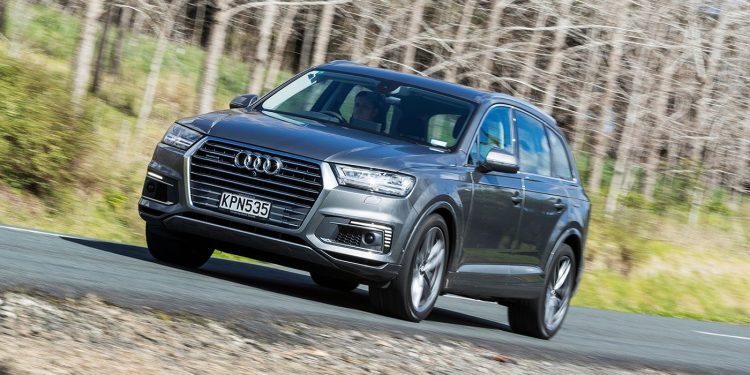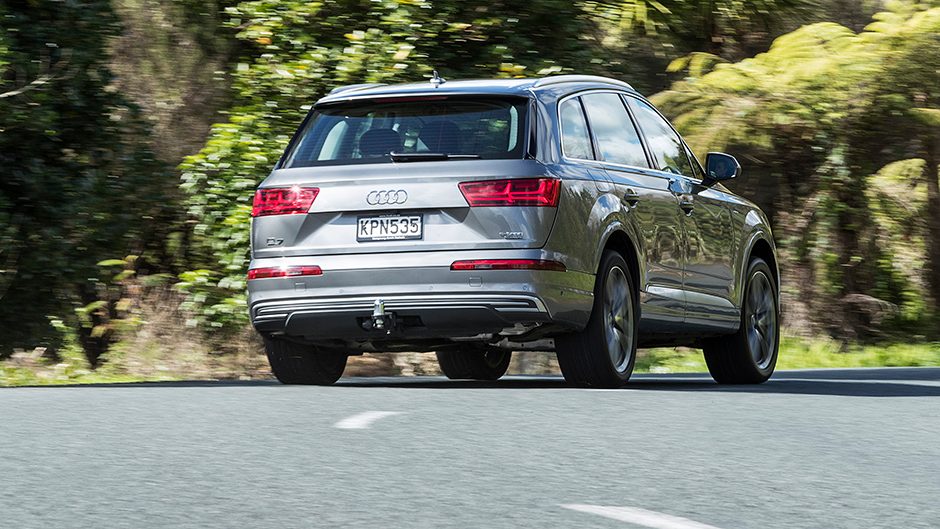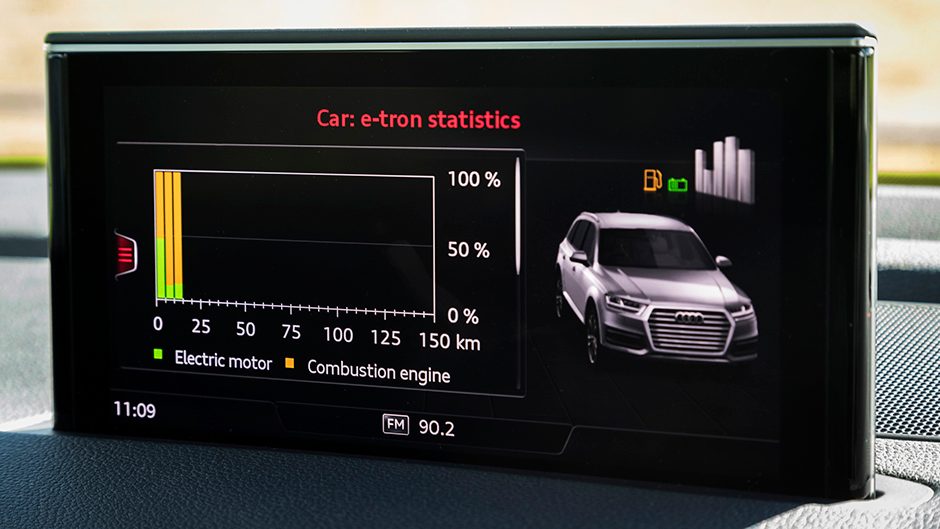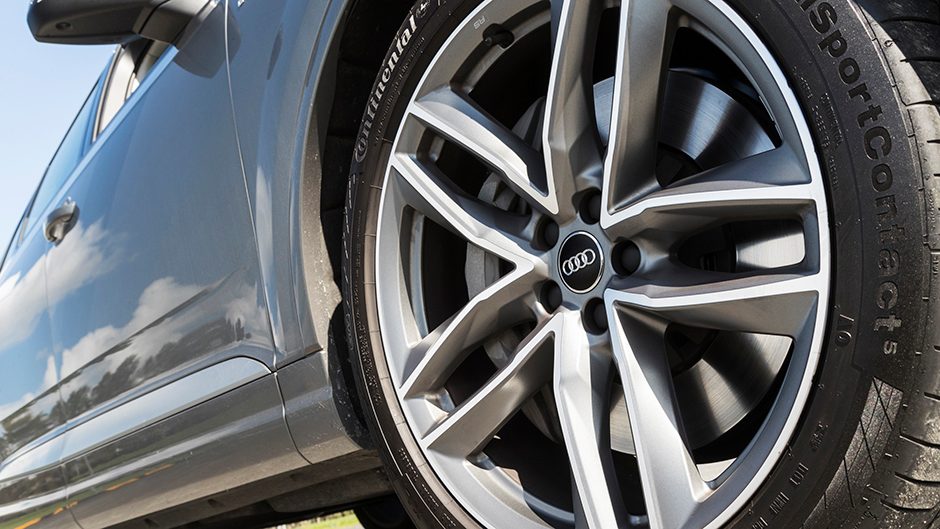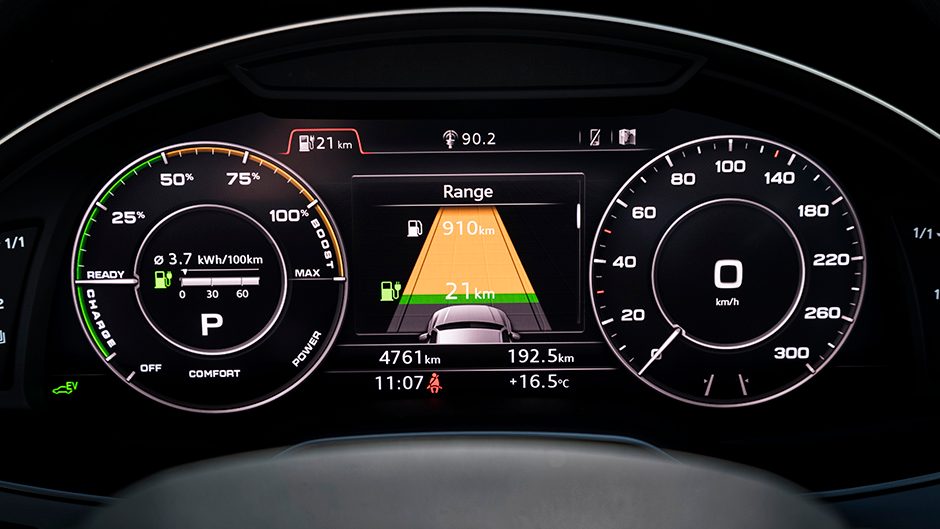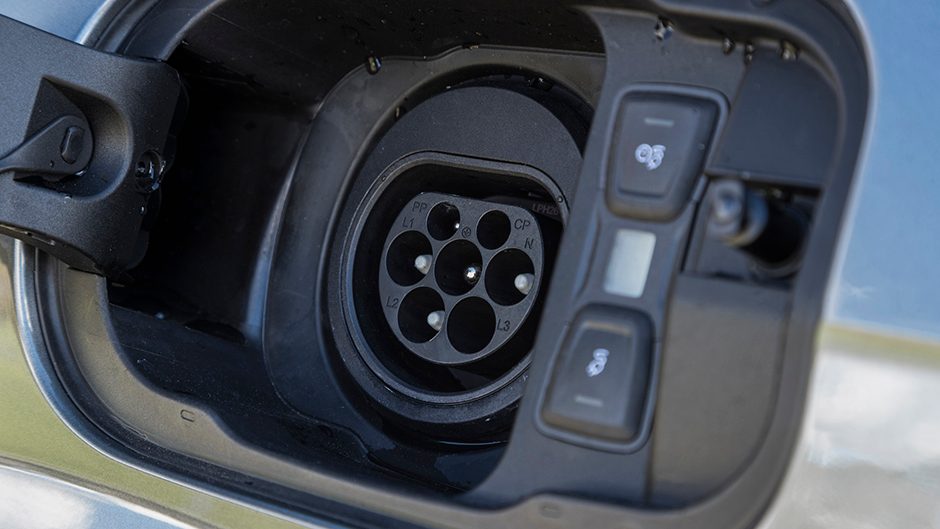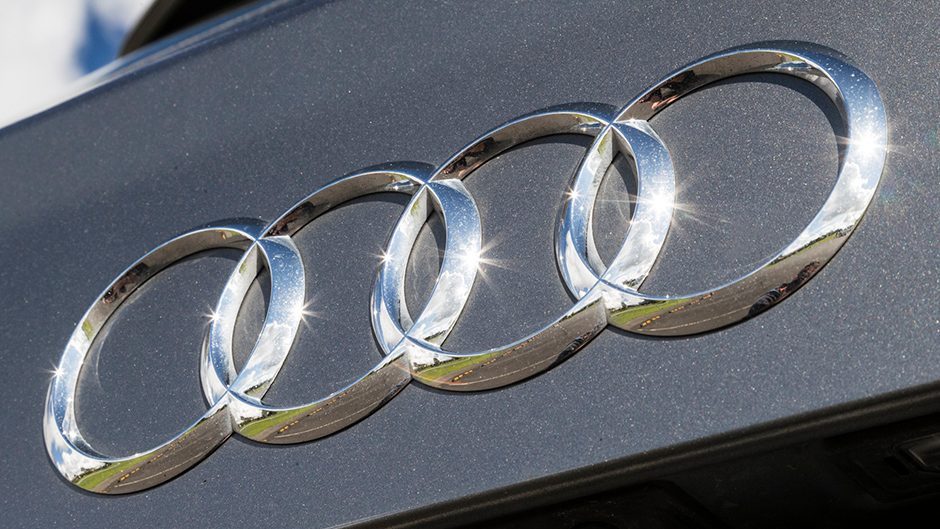2017 Audi Q7 e-tron review
Words: Kyle Cassidy | Photos: Tom Gasnier
When does a diesel SUV get away with not paying road user charges? When it’s a plug-in hybrid, for under the current regulations a plug-in is classed as an EV and therefore exempt from RUCs.
That applies until EVs constitute two per cent of the fleet, or someone reclassifies an EV as something that never needs gas or diesel. Anyway, the Q7 e-tron is another of the market’s growing electrified options.
We’ll get the difficult part out of the way first, and that’s the subject of the usual hybrid premium. The Q7 e-tron starts at $158,400, or $18,500 more than the TDI 200kW S line model most buyers opt for. While there are a few minor incentives for EV ownership, you’ll need a good dose of the EV faith to make the plunge here we suspect. The e-tron bits include a 17.3kW/h lithium-ion battery, stored under the boot floor which means there’s no space for the extra seats in this Q7. The battery is covered by an eight-year, 160,000km warranty if that concerns you.
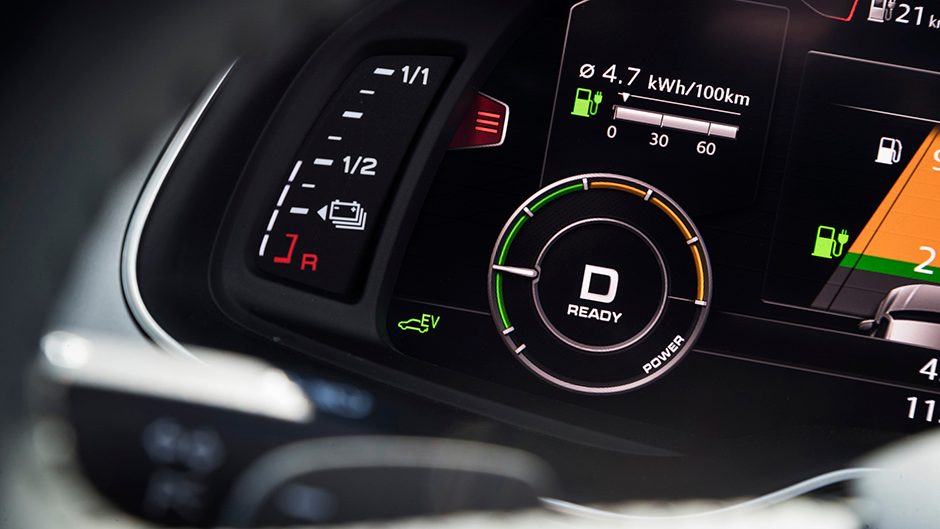
There’s a 94kW/350Nm motor behind the engine, with a clutch between them to disengage the diesel from the driveline when it’s not required. The motor is coupled to the eight-speed auto, and can deliver its 350Nm from 1rpm through to 2550rpm. The AWD system is otherwise the same as the rest of the range.
The engine is a Euro6-compliant, 190kW/600Nm 3.0-litre TDI which is optimised for hybrid use while ensuring the components can handle suddenly being switched on and operated under full load when the fluids are still cold. When the two power sources combine, output is a handy 275kW and 700Nm. The official average is 1.8L/100km with an EV range of up to 56km but, as always, your range will vary. With a fully amped battery, we had an indicated EV range of 53km, which translated to 36km travelled without the diesel engine needing to compress a drop of fuel. The other times we recharged, battery power netted 34km of EV travel and another of 40.
The Q7 takes to motorway travel well in EV mode (it has an EV max of 135km/h) but this eats into range. You can fiddle with the EV drive modes, switching from EV to hybrid auto where the system will determine which is the best power source to employ for maximum efficiency, while the hybrid hold mode maintains battery charge for EV use at a later part of the journey. Either of these is good for motorway travel to conserve the battery for stop and start urban driving, where these hybrids always perform best. Once the battery is done, the diesel takes over as the main motivator and the fuel use averages were in the 8-10L/100km range.
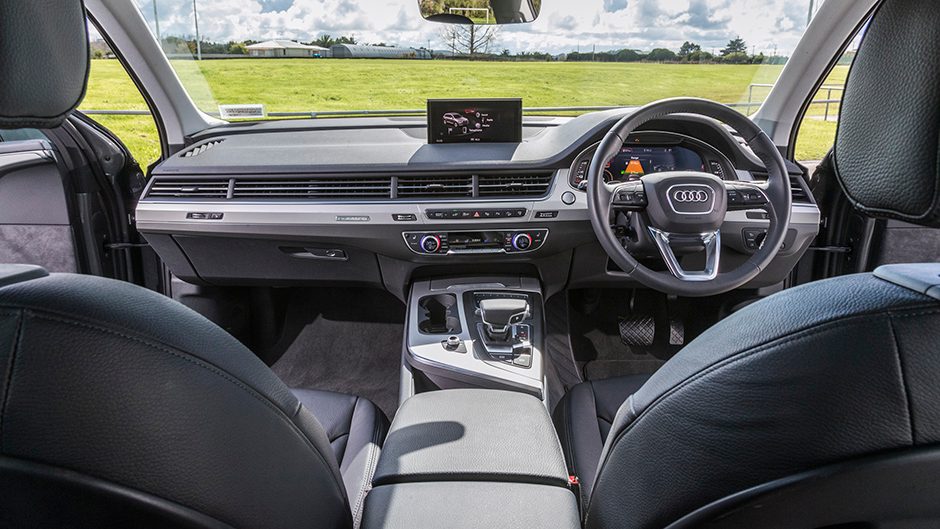
The Q7 gets the virtual cockpit with a raft of meters and displays to show you what’s happening in terms of energy flows and consumption, and there’s a variable pressure throttle pedal so you can maximise the EV mode and avoid firing the engine up. Floor the pedal, and the maximum thrust is decent, the engine coming in seamlessly, and quickly.
This leaps off the mark and will hit 100km/h in 6.2sec, decent going for something weighing a gargantuan 2614kg (claimed 2445kg). That’s just under 400kg heavier than the TDI 200kW we weighed. How fast an EV is it? It’ll hit 50km/h in 5.7sec but takes 19.9sec to reach three figures. It’s smooth as you’d imagine, quiet too, and when the diesel does fire up, it’s hushed, and driveline vibrations are soothed by dynamic engine mounts.
The brakes feel ‘normal’ at higher speeds, which is when the conventional hydraulic system is used, but can occasionally feel odd at slower speeds when the system uses the electric motor to recoup energy. The Audi drive select has all manner of drive modes, including Dynamic, and if you’ve got any battery charge left when you find twisting roads, the power delivery in full boost mode gives it a decent surge out of the bends.
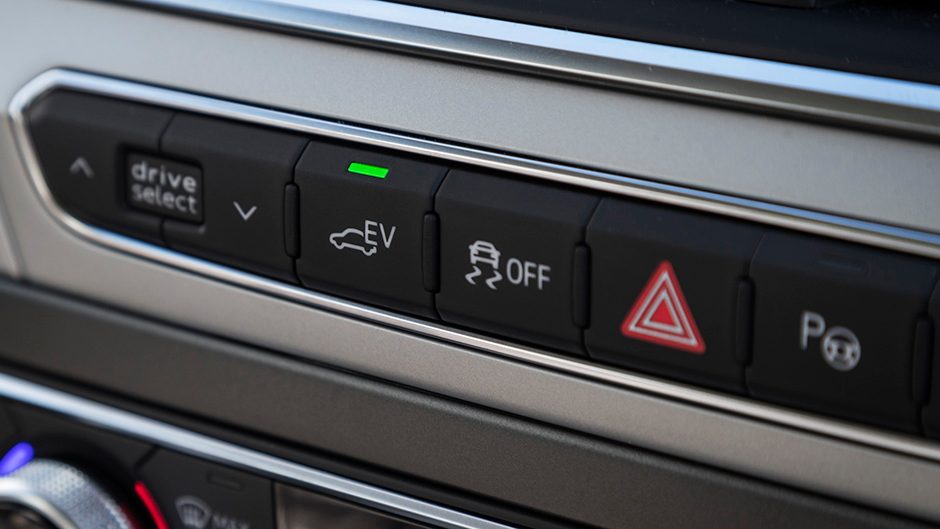
The air springs give the e-tron a refined town ride in Comfort mode and help minimise the lurch in the curves when Dynamic is selected. It manages surprisingly well considering that weight figure, but the regular 200kW Q7, especially with the rear-wheel steer option, is preferable on these sorts of roads, not to mention the SQ7.
This e-tron will tow up to 3500kg. It comes with a Type 2 plug and a 10A and a 16A charging cable, both a decent length. There are various charging timer options so you can start the juicing in off-peak times. They say it takes about eight hours on the regular three-pin, 10A cable, and five on the single phase, 16A cord. On a 32A fast charger, it will be reheated in 2.5 hours. This would be a good option to have at your workplace to top up if you’ve got important places to be during the day.
The Q7 e-tron hybrid is a stepping stone to Audi’s full EVs, arriving here in 2019, the first being a luxury SUV. It’ll be even more expensive than this but promises to be quite something, and it’s probably worth holding out for. Hopefully it’s somewhat lighter too in the interests of range.
| Model | Audi Q7 e-tron |
| Price | $158,400 |
| Engine | 2967cc, V6, TDI, 190kW/600Nm |
| Drivetrain | 8A, AWD |
| Fuel Use | 1.9L/100km |
| 0-100km/h | 6.20sec |
| Weight | 2614kg |


